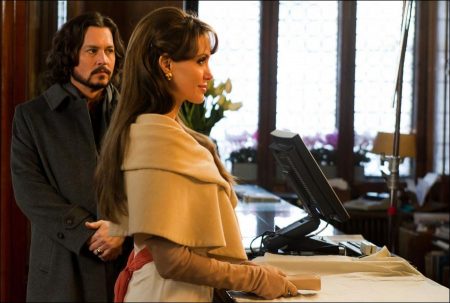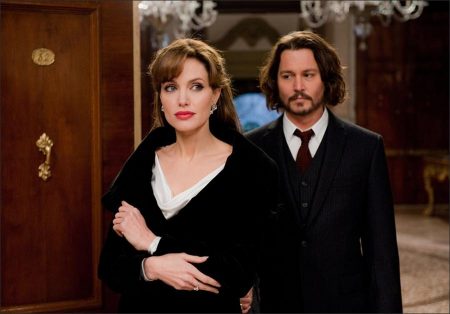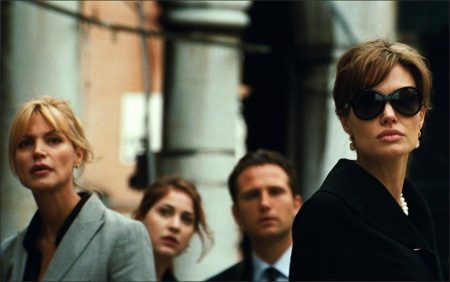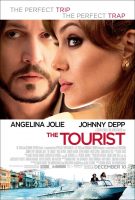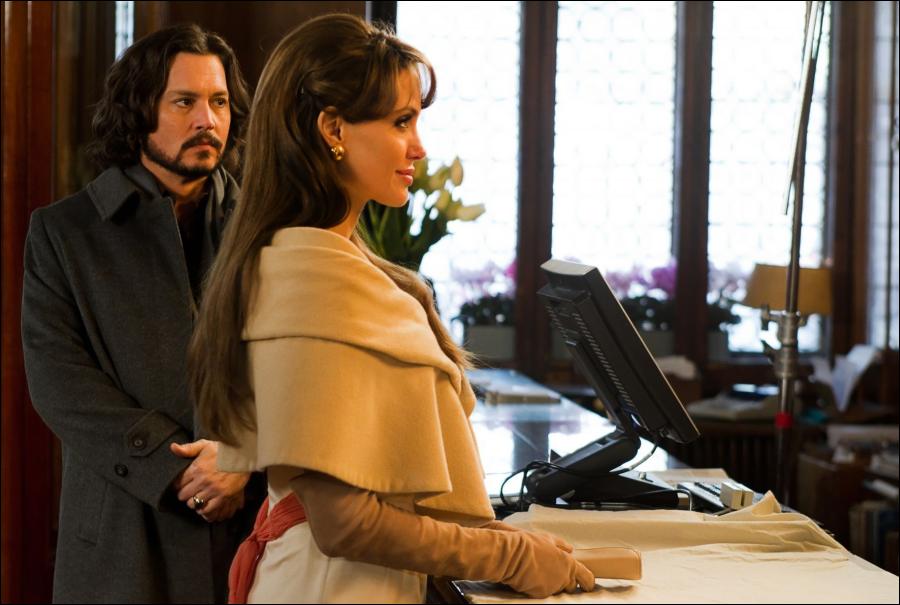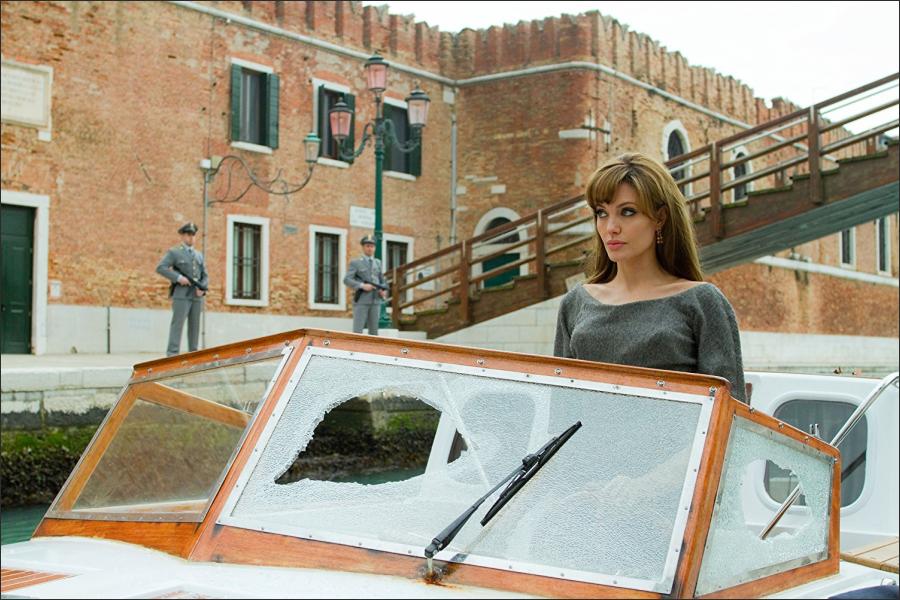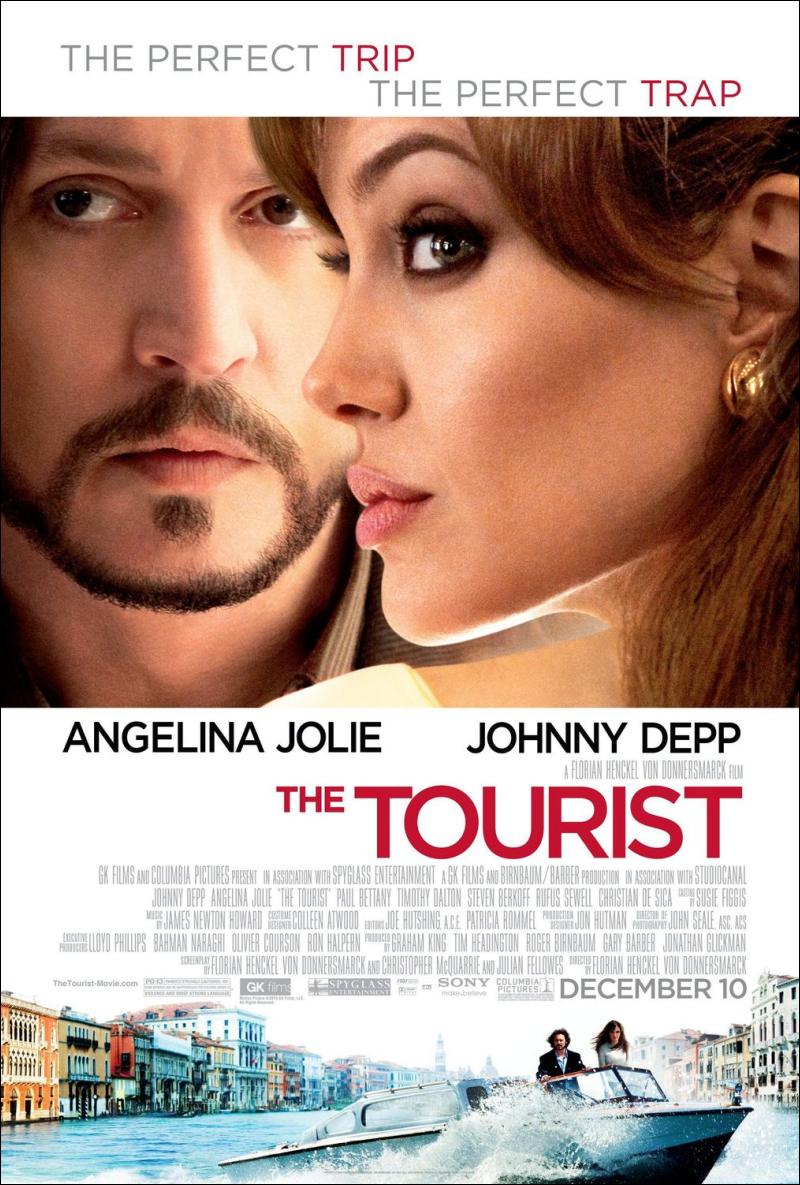Shooting in Venice
“Shooting in Venice gave this film a very special, joyful, and very beautiful flavor,” says director Florian Henckel von Donnersmarck. “Of course, it also presented us with considerable design challenges, since Venice and Paris have been photographed so much, and we wanted to show it in a new way. Jon Hutman was the first person I called after I read the script. I had admired his work on Redford’s film Quiz Show, on Nancy Meyers’ What Women Want and Something’s Gotta Give and on Sydney Pollack’s The Interpreter and knew that he would be able to get me what I needed.”
In early conversations between the director and the production designer, Jon Hutman, they agreed the film’s design had to reflect the beauty of the city of Venice, while making sure the city still felt fresh and contemporary. Explains Hutman: “Where else but the city of Venice can you have canal boat chases and roof top chases, but also have your characters doing a walk-and-talk strolling through some of the most stunning streets in the world? Angelina Jolie, Johnny Depp, and Venice… It doesn’t get much better than that!”
It was co-screenwriter Julian Fellowes who hatched the idea of setting the film in Venice. “Venice combines beguiling beauty with a sinister under-taste of a decay of civilization. The city can have a darkness to it,” he says.
Venice, the “city of canals,” stretches across a shallow and marshy lagoon along the Adriatic Sea in Northeast Italy. Venice was built on an archipelago of 118 islands formed by about 150 canals, with roughly 400 bridges connecting the islands. Transportation is either by boat or on foot: no cars or even bicycles are allowed.
Still, even with the logistical challenge it presented, it was easy to sell the filmmakers on the location. As executive producer Lloyd Phillips explains, “You really never know what Venice is about. It has so many faces. The architecture is so unique. The light is like nowhere else in the world. It bounces off the canals onto windows in such a magical way. This film is filled with twists and turns, and that intrigue, along with the combination of the character of the city, is a perfect marriage.”
Venice is primarily a tourist destination, and the Mayor’s Office and the Chief of Police in Venice were very helpful during filming in assisting the production blend in with some of the 20 million visitors the city receives every year with a minimum of headaches. From Piazza San Marco to the Peggy Guggenheim to the Natural History Museum to the Rialto Market to the Arsenale, tourists visiting the city caught a glimpse of Jolie and Depp in action.
Among the more than 50 locations in the film, Production Designer Jon Hutman’s team was tasked with huge builds on three sets: the Doge Suite in the Danieli Hotel; the Gala, a black-tie affair; and Pearce’s apartment, where the climax of the film takes place.
The Doge Suite in the film is located inside the Danieli Hotel, and the crew did actually shoot in the Danieli lobby, though a suite was constructed off the hotel premises. The actual location of the Doge Suite set was at the Palazzo Pisani Moretta right on the Grand Canal so it had the perfect balcony where an intimate scene between Elise and Frank could be shot.
Venice is a city built in brick, and the Doge Suite’s interior earthy terracotta hues meshed with ornate accents like crystal chandeliers enhance the location space of Palazzo Pisani Moretta. Hutman re-proportioned the rooms and with double doors and floor to ceiling windows the space transformed into timeless combination of modern and old Venetian décor.
“When we were shooting inside the Doge Suite set, I spent the three days of shooting there thinking, ‘What an amazing hotel room.’ Then someone showed me that none of the walls were real, and that’s not real marble, it’s painted,” says Angelina Jolie. “It was crafted so meticulously I couldn’t tell what was added on and what was adjusted.”
For the Gala set, Hutman and his team took ten weeks to design a concept for an empty space the size of a football field. Hutman and Henckel von Donnersmarck, along with location manager Fabrizio Cerato, found the Scuola Grande della Misericordia in the Canneregio district in Venice and fell in love with it from the moment they saw it. This vast interior of this 18th century building has exposed brick walls typical in Venetian architecture along with columns for building support.
Hutman and his supervising art director, Marco Trentini, and a team of twenty expert builders and painters, took four weeks after the designs were completed to bring the set to life. Because the building is historically preserved, The City of Venice approved every aspect of Hutman’s design – down to the nail.
An entire mezzanine and balcony were built from scratch; sculpted and sanded to match the pre-existing columns and floors. Complete with railed staircases. A dance floor was built from wood, and the wood was hand-painted to look like marble. A raised platform was constructed for the twenty-piece orchestra featured in the scene. The columns were wrapped with mirrors and squared wooden frames that were painted to blend in with the real white marble. Electrical outlets were installed for the crystal sconce accessories that radiated in the space.
“As Elise and Frank dance, you have this glittering, sparkling background. Glamour. A formal but kind of raw elegance,” says Hutman. Hutman took on the challenge of designing Pearce’s Apartment, where the stand-off at the end of the film takes place, in Giudecca, one of the islands in Venice just across the lagoon. On the island, just next to the Hotel Palladio, is Villa Effe, where Hutman had a completely gutted space to create Pearce’s beautiful apartment with stunning views on the Giudecca Canal. “It was like starting with a blank canvas,” says Hutman.
About the Costumes
Two-time Academy Award-winning costume designer Colleen Atwood lent her talents to create the unforgettable wardrobe for The Tourist. Atwood was assisted by her international wardrobe department team of ten people strong, from the UK, U.S., and Italy.
Director Donnersmarck was thrilled to get his first choice Colleen Atwood: “Colleen Atwood is everybody’s first choice for costume designer. She certainly was mine ever since I saw Chicago. She has proven that sexiness and elegance can be one and the same. She can make monkey aliens look sexy – and has. Colleen is the definition of good taste in clothing. Her costumes elevate every film, every scene.”
Keeping in concert with the other departments’ goals, Atwood’s costumes would be designed with a glamorous feel to it. Each piece would be individually chosen and made to bring out the elegance and simplicity of each character.
Atwood turned to her own extensive fashion photography collection, using the works of Richard Avedon and Louis Dahl-Wolfe for inspiration for her designs.
“My designs are a blend of old world and new world together,” says Atwood. “I did a more classic take on fashion as opposed to the latest greatest trends and brightest colors. I really wanted a nod to the architecture of this beautiful city, and the environment is quite busy. So I kept the look for the cast simple.”
Atwood has created many different looks for Johnny Depp throughout her career, from Edward Scissorhands to Alice in Wonderland to the upcoming GK Films release The Rum Diary. She and Depp have a rhythm and communication all their own.
“Colleen understands character, and she can connect to that with colors and fabric and textures,” says Depp. “She provides you with the physical skin for the character, and you combine that with what you’re bringing from the inside, and it’s a beautiful meeting of the two sides. She changes the way you walk, the way you stand, the way you sit, the way you relate to people. She’s quite something.”
“Johnny and I have worked together so many times, but we have never done a contemporary picture. We both wanted to keep his character of Frank Tupelo as real as possible. He is an ordinary guy, so we kept it simple: a classic gray suit, white shirt, dark tie.”
Even for the gala scene, Atwood created a sophisticated streamlined white dinner jacket and trousers for Depp, finished by tailors in London on the famous Saville Row. “A classic palette all the way around,” says Atwood.
Atwood also collaborated closely with Angelina Jolie to present Elise as very much the lady. Says Atwood, “We wanted Elise to be extremely feminine and powerful at the same time.”
Jolie says, “She’s a magician with clothing. She has really exquisite taste. I am usually very specific about what I wear and I had a few opinions, but pretty much I let her do her thing. From the first time you see Elise, when she is in a tight skirt and heels, you know who she is.”
The complex dress that Jolie wears in the Gala scene was a gown made of layers of black silk tulle, net, and satin with a pleated layered edge. Atwood and her team took weeks to make two of these Gala dresses all by hand. The gown hung delicately off her shoulders framing her face along with the extravagant antique diamond choker. “We wanted a dress that was really feminine, that harked maybe to another time and elegance, but didn’t take away from the necklace. It framed her face and body beautifully.”
The same black gown that the character of Elise dances with Frank at the Gala also carries over to the action sequence that is the climax of the film. One of the gowns was used for close-up shots, and the exact replica of the same gown used for more stunts and action packed moments.
Besides dressing Jolie and Depp for the Gala scene, Atwood and her wardrobe department had their work cut out for them when designing costumes for the Gala scene. This black-tie affair would feature more than three hundred extras, along with a very beautifully outfitted Elise and Frank. Fittings for the extras began a month before the Gala scene was shot.
Atwood dressed the women background Gala extras using a very controlled palette of floor length evening gowns, many of them designed by Alberta Ferretti. Each gown was hand- tailored to each background extra weeks before the scene was shot. Special attention was paid to the gowns for the dancers who had to be able to move to the music with ease. Lycra panels were added when necessary and hems were slightly raised. But Atwood did not design every costume in the scene: Paul Bettany wears his own Ozwald Boateng-designed tuxedo for the sequence.
About the Score
Oscar-nominated composer James Newton Howard provides the score for The Tourist. “James Newton Howard has been one of my favorite composers ever since he made me cry during My Girl, made my heart race during The Fugitive and made it almost stop during The Devil’s Advocate. The creative exchange with him felt like the reward for all the hard work we put into making the movie,” says Florian Henckel von Donnersmarck.
“When I met Florian, we talked about the setting of the film and the kinds of rich, romantic overtones that we could apply to Venice, but also the city’s dark romance, the idea of a past glory. There’s a tension there that gives a real sense of urgency to the score.”
“The challenge for any score is to find a tone that is unique and individual to that particular film,” says Howard. “I also try to give the music a validity in its own right, give it a life, beyond the film – really, to give it integrity, as music.”
It is the work of the score, of course, to add depth to the characters. “Elise is really in control – she’s very confident,” says Howard. “That’s one of the things I wanted to express with the music – the audience might not always be 100% certain what she’s up to – and she does have some moments of vulnerability that come through in the music – but essentially her character was about control. Frank, in the beginning, is about warmth and solidarity – he is a constant presence in a tumultuous, chaotic cast of characters.”
For the film’s central gala sequence, composer Gabriel Yared, who won an Oscar for his score for The English Patient and has been nominated by the Academy two other times, provided the music. In London a month prior to the sequence being filmed, he recorded an orchestra of twelve cellos, four mandolins, one stand-up bass, and a harpist. “I was so happy to work with Gabriel again after The Lives of Others. The beauty of that piece helped me convince Johnny Depp to actually dance on camera – not a small feat!”
The Italian choreographer Luca Tommassini, who has toured with Madonna internationally, worked with thirty professional dancers to create the synchronized dance for the scene. The choreography reflects a mix of styles, ranging from waltz to tango. Tommassini also rehearsed and worked closely with Angelina Jolie and Johnny Depp, neither of whom had much dancing experience. By the time the cameras were rolling, they fit right in amongst the professionals.
The Tourist (2010)
Directed by: Florian Henckel von Donnersmarck
Starring: Angelina Jolie, Johnny Depp, Paul Bettany, Timothy Dalton, Steven Berkoff, Rufus Sewell, Clément Sibony, Giovanni Guidelli, Christian De Sica, Alessio Boni, Bruno Wolkowitch
Screenplay by: Julian Fellowes, Christopher McQuarrie, Jeffrey Nachmanoff, William Wheeler
Production Design by: Jon Hutman
Cinematography by: John Seale
Film Editing by: Joe Hutshing, Patricia Rommel
Costume Design by: Colleen Atwood
Set Decoration by: Anna Pinnock
Art Direction by: Susanna Codognato
Music by: James Newton Howard
MPAA Rating: PG-13 for violence and brief strong language.
Distributed by: Columbia Pictures
Release: December 10, 2010

